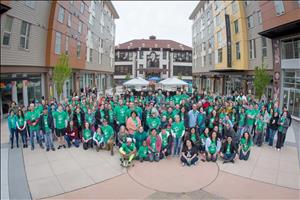In 1973, the Seattle Samoan Center opens at the El Centro de la Raza, a Chicano/Latino community center, in North Beacon Hill. The center addresses the social needs of the Samoan community and provides services to help migrant community members adjust to American society. Over the years, the center will provide constant programming for elderly and youth day care as well as cultural classes for children. The center will actively seek grants for projects to address specific problems plaguing the community such as drugs and gang violence. The center will channel the voice of the community and actively remind Seattle and its citizens of the ongoing issues of poverty, unemployment, English illiteracy, and the high dropout rate of high school students that plague the Samoan community.
Samoans in Seattle
The Samoan Islands, located about two-thirds of the way from Hawaii to New Zealand, became an American territory in 1899. In exchange for the land, resources, and a strategic position in the Pacific Ocean, the American government promised protection, trade, and friendship to the Samoan king. Samoan nationals begun settling in the Seattle area in the 1950s, primarily in southeast Seattle, Beacon Hill, and West Seattle, and they formed an insular community that cared for its members through the Samoan churches and their social network.
By the 1970s, some members of the community formed the opinion that the reliance on churches for social services fragmented the community and did not provide adequate services necessary for the migrants adapting to life in America.
El Centro and Seattle's Samoans
The Seattle Samoan Center was the first Samoan community center and it offered social services to members of all ages in the larger Samoan community. El Centro de la Raza, in North Beacon Hill occupies the former Beacon Hill Elementary School. The center opened due to the efforts of Betty Patu, Paul Patu, and Pete Talaga as well as the auspicious support of Roberto Maestas (1938-2010), who started El Centro.
The programming included elderly and youth day care, job training, a summer lunch program for the low income and even classes in Polynesian culture and languages. In 1978, El Centro de la Raza asked the Samoan Center to give up its space in the center, and the Samoan leadership, including coordinator Galumalemana Vaiinupo Alailima, lobbied for space in the Fairview Elementary School for their programming. However, controversy embroiled the move since parents decided to fight the closing of the school. Eventually the center found space for their services in Columbia City, which allowed easy access for residents in nearby Beacon Hill and in southeast Seattle
Serving the Samoan People
By the 1990s, the Samoan population became one of the fastest growing communities of Asian/Pacific Islanders in Washington. During this time, the center consistently received grants for new educational projects to help the Samoan community; these new projects allowed the center to reach out to particularly salient issues in addition to their daily programming.
In 1993, the city gave the center a grant for $2,588. This money helped to fund an all day conference to provide education to youths about gangs and drug prevention. In 1994, to combat youths taking up smoking under peer and family pressure, the center received a $5,000 grant from the Tobacco Free Coalition of Washington and provided anti-smoking educational material especially translated brochures. At the time, three quarters of the Samoan population in Seattle still spoke limited English. Additionally the center planned to involve tribal chiefs and community leaders who could act as non-smoking role models for the children. By 2001, the center had expanded its programming to after-school tutoring, English classes, Samoan volleyball, and a driver’s license program.
The Seattle Samoan Center also actively voiced the needs of the Samoan people to the city as well as through the press. It provided facts and figures to keep the mainstream community mindful of the poverty, unemployment, English illiteracy, and high dropout rate of high schoolers, which constantly plagued the Samoan community.

